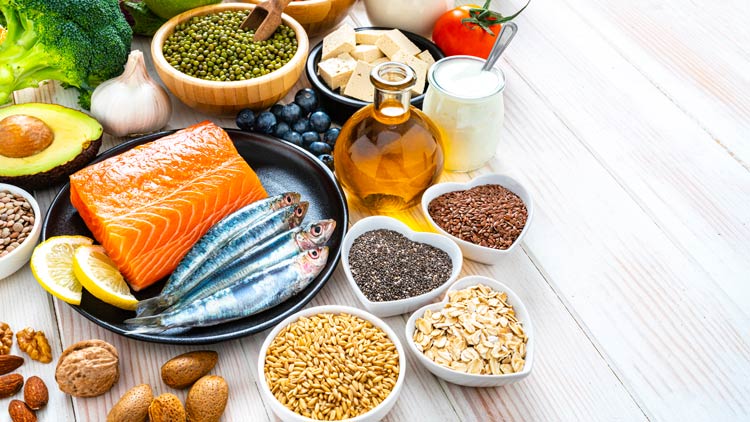Protein: What’s Enough?

Think every meal should include protein? Not necessarily. Most of us are getting far more protein than we actually need — especially when it comes to meat.
On the other hand, more than half of Americans do not meet recommendation for seafood, nuts, seeds, and soy products, said Judith Wylie-Rosett, a nutritionist and registered dietitian at the Albert Einstein College of Medicine of Yeshiva University in the Bronx, N.Y., and an AHA volunteer on the Nutrition Committee.
What’s the harm in getting too much protein?
Consuming extra protein often comes from eating meats high in saturated fats, which can add to elevated cholesterol levels of the LDL — or “bad” — cholesterol. And, Dr. Wylie-Rosett says, eating more protein is coming at the expense of other food groups such as fruits and vegetables that most Americans struggle to get enough of.
How much protein do you actually need?
The recommended daily allowance (RDA) is 0.8 g/kg per day for adults aged 18 years or greater. Based on weight, growing children and pregnant or lactating women require a little bit more protein than a typical adult man or woman because their bodies are building more muscle.
In terms of calories, the recommendation is 10% to 35% of your daily calories come from protein.
What does that mean in terms of food?
If one’s body weight is 70 kg, RDA of protein is 56 g/day. Drink an 8-ounce glass of milk, and you’ll take in about 8 grams of protein. Add a cup of yogurt for about another 11 grams. Follow that up with a 3-ounce piece of lean/extra lean meat (about the size of a deck of cards), which has about 21 grams of protein and a cup of dry beans, which has about 16 grams, and you’ve already reached the 56-gram requirement for an adult man.
Here’s a guide outlining the American Heart Association’s suggested servings for each food group.
- Choose plant-based proteins such as legumes, nuts, lentils or chickpeas. These are not only high in protein but fiber as well. Legumes, for example, can pack about 16 grams of protein per cup and are low in fat and an inexpensive alternative to meat.
- Opt for low-fat or fat free dairy options instead of full fat dairy products.
- Include regular intake of fish and seafood 2 to 3 times a week, especially oily fish such as salmon, anchovies, herring, mackerel, tuna, and sardines, which are high in poly-unsaturated fats. Make sure to avoid seafood that is fried. These forms do not have health benefits.
- When choosing meat or poultry opt for lean cuts, skinless poultry and avoid processed forms.
- Eggs are another good source of protein and provide other sources of nutrients that benefit your health. Healthy individuals can include up to a whole egg or equivalent daily. However, people with dyslipidemia should be cautious in consuming eggs.
- Choose main dishes that combine meat and vegetables, such as low-fat soups or a stir-fry.
- Be aware of portion size. Aim for 3-ounce servings (4 ounces raw) of cooked poultry or meat per meal.






